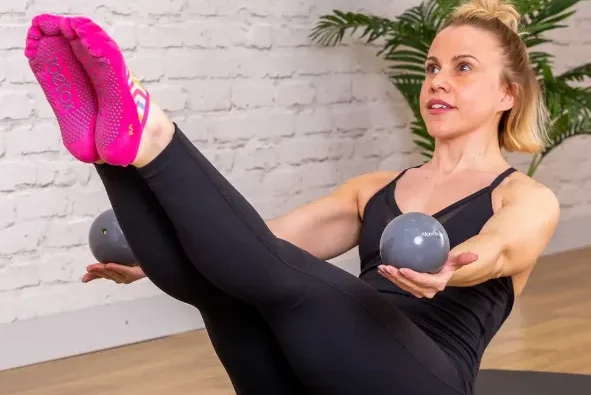
Strength training is one of the best ways to improve your health, fitness, and overall well-being. Whether your goal is to enhance body composition, gain strength, or improve mobility, focusing on the right movements and exercises can make all the difference. Instead of getting caught up in lengthy, complicated workouts, why not streamline your training to get the most efficient results in the shortest time? The key is understanding the essential principles of training that deliver the most significant return on your effort.
The 80/20 Rule: Focus on What Matters
The 80/20 rule, or the Pareto Principle, tells us that 80% of the results come from 20% of the effort. In the context of strength training, this means that the most effective exercises will provide the most significant benefit, so it’s crucial to prioritize the movements that work best for you. Many traditional workout plans often include unnecessary exercises or overly complicated routines, but if you focus on the fundamental movements, you’ll save time and still get great results.
Why Strength Training Matters
Before jumping into program design, let’s briefly talk about why strength training is so important. While improving body composition is a common goal, strength training also offers a wide range of benefits beyond looking better in the mirror:
- Bone Health: Strength training increases bone mineral density, reducing the risk of osteoporosis.
- Aging Gracefully: It helps improve skin elasticity, hormonal balance, and cognitive function.
- Posture & Mobility: Proper strength training reduces back, neck, and joint pain by enhancing mobility and posture.
- Disease Prevention: Regular strength training lowers the risk of conditions like heart disease, type 2 diabetes, and Alzheimer’s.
- Self-Confidence: As your strength and physical appearance improve, so does your confidence.
In short, strength training not only makes you stronger but also improves your overall quality of life. It enhances your ability to perform daily activities, reduces the risk of chronic illnesses, and boosts your mental well-being.
A Simplified Approach to Strength Training
Many programs overcomplicate strength training by isolating specific body parts (like chest or arms) with accessory exercises such as bicep curls and leg extensions. While these exercises have their place, they tend to be less effective for people with limited time or those focused on overall health. Instead, focusing on movement patterns rather than specific muscles allows you to streamline your workouts while achieving greater results.
Movement patterns, such as push, pull, squat, hinge, lunge, and carry, address multiple muscle groups simultaneously, making them the most efficient exercises. These compound movements not only save time but also build strength, stability, and mobility in a balanced way.
Key Movement Patterns and Exercises
Here are six essential movement patterns, along with exercises that fit each one. These exercises can be performed using minimal equipment or just bodyweight, making them perfect for home or gym training.
- Squat – Goblet Squat, Sumo Squat
- Weighted Carry – Farmers Carry, Single-Arm Overhead Carry
- Push – Push-Up, Floor Press, Overhead Press
- Pull – Bent Over Row, Renegade Row, TRX Row
- Hinge – Deadlift, Stiff Leg Deadlift, Kettlebell Swing
- Lunge – Goblet Lunge, Walking Lunge, Split Squat
How to Program Your Workouts
To maximize the effectiveness of your training, it’s important to make your workouts simple but progressive. Start by incorporating these movements into your routine, and gradually increase intensity over time.
For example, squatting should be a regular part of your workout program. Not only is it a great functional movement, but it also improves hip mobility, which is a common source of lower back pain. Aim to move through these exercises daily, either by doing them in a circuit or focusing on specific movements for a set time.
Training for Strength vs. Hypertrophy
Depending on your goals, the weight and rep range will vary. For strength, you’ll want to lift heavier weights with fewer reps (4-6), while for hypertrophy (muscle growth), a moderate weight with higher reps (8-12) is ideal. For general fitness, moderate weights with circuit-style training can be used to target multiple muscle groups effectively. The key is to gradually increase the load or reps to progress over time.
Sample Full-Body Strength Workouts
Here are two examples of effective full-body workouts:
Interval Style Workout (2 Rounds):
- 40 seconds working/20 seconds rest
- Goblet Squat
- Farmer’s Carry
- Push-Up
- Bent Over Row (20 seconds per side)
- Kettlebell Swing
- Walking Lunge
Rounds Style Workout (3 Rounds):
- 15/12/9 reps
- Sumo Squat
- Overhead Press
- Split Squat (full reps per leg)
- Renegade Row (full reps per arm)
- Stiff Leg Deadlift
- Farmer’s Carry
Progression and Consistency
The key to lasting results is progression. As you continue, challenge yourself with heavier weights, more reps, or faster times. Keeping your workouts fresh and progressively more challenging will help you avoid plateaus and boredom.
Remember, consistency is critical. Incorporate these essential movements into your routine, and keep progressing to avoid stagnation. If you find that squats or deadlifts are your least favorite, it’s even more important to include them in your program regularly for maximum benefits.
Final Thoughts
Strength training doesn’t need to be complicated. With a focus on the essential movement patterns, you can create an efficient and effective program that helps you improve overall fitness, health, and performance. You don’t need to spend hours at the gym or follow a rigid program to see results. Keep it simple, keep it fun, and stay consistent. Your future self will thank you for it!












